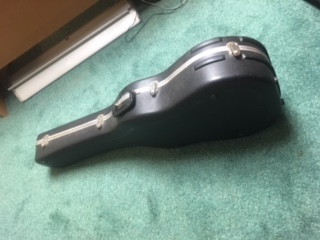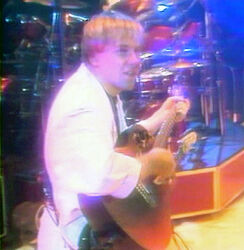I wish I had a dollar for every time I heard this lament. I've often thought about all of the "would be" guitar players
that abandoned the idea when they experienced "hard to press" strings. To me, it's sad because many times, it was the guitar itself.
To be frank, "virgin fingers" will definitely feel some discomfort for the guitar requires, like many things in life, an
adaptation to its physical requirements to producing sound. Rather, it should in fact, be somewhat easy to start playing, especially if the guitar is built well and "set up" appropriately.
Lets look at some scenerio's dealing with what I call "THE OUCH FACTOR"
Scene 1: "I want a guitar!"
A kid wants a guitar. A parent or friend ( with good intentions ) goes out, buys a guitar and as a surprise, gifts it to him or her.
The initial challenge is, what type of guitar is it? , is the size correct? , does it play easily? The guitar may be a huge challenge for a number
of reasons, too large of a body style... heavy gauge strings, old corroded strings, high action ( where strings are too far away from the fingerboard, )
poor intonation, ( good sound is compromised ), and the list goes on.
Solution:
Bring the new player to an experienced guitarist or to a reputable music store / guitar service shop for help in choosing the right guitar.
It will make a big difference in allowing the new player a chance to continue on without experiencing discomfort and poor sound.
Scene 2: "Grandpa's old Guitar"
Why go buy a new guitar when you can dig out the old guitar in the attic or whatever? Now if we're lucky it might be a beautiful, well crafted
example the guitar but in many cases, it's not... the strings are old and there may even be a few missing. String tension, over prolonged time
coupled with either high or low humidity conditions can cause challenges also.
Solution:
Bring Grandpa's" old guitar to a professional luthier / guitar service shop and have them evaluate it. In many cases, it does not cost a lot
to get it ready or set up for it's second or third life with a new player. There's quite a sentiment towards vintage guitars and some are worth a few bucks
so have it appraised when you bring it in.
Scene 3: "The Infamous Cheapie Guitar"
Yep, you heard it. "Why spend a lot of money on a good guitar when Billy may not even end up playing it."
As a certified Luthier and Guitar Repair Service AND an accomplished guitarist and teacher, I have to say many...yes MANY new players walk away
from what would be a wonderful instrument to learn...but...the OUCH Factor ocurred.
This is exactly the point here...if Billy can't play it because the guitar is very poorly built and it also sounds like some alien notes are spewing from it,
every time he or she strums a chord, you can kiss his or her interest goodbye. Would you buy a cheap, poorly built car for your kid's first car? Hello.
Keep in mind, if the quality guitar is not played, you can generally re-sell it for what you had into it.
Solution:
Look for a reputable brand of guitar...Taylor, Martin, Gibson, Fender, Ibanez and Epiphone to mention a few. Start if possible, with a subsized
guitar like a 3/4 size acoustic or a parlor model. The travel well and are easy to handle and play. Some of my favorites are the Baby Taylor ( trending at
$175. - 200 and the Taylor GS MINI ( trending at $350-400 ). If your on a budget, check out some of the Ibanez youth or student models in the $100 range.
So my friends, if you or someone you know experiences the OUCH Factor, call us or stop by the shop because we specialize in "Ouch Removal"!
We are Born Again Guitars LLC - Certified Repair, Restoration and Custom Builds Wake Forest, NC 27587
Visit us at BornAgainGuitars.com
Stay Tuned!


















